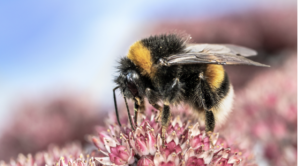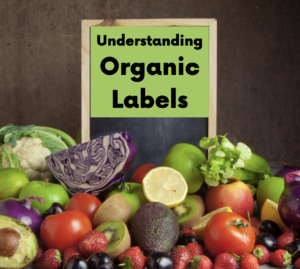
Don’t Feed the Trash – The Opportunity Found in Food Waste


Alex williams
Food Waste in the United States
When it comes to how individuals can make a difference in climate change, the feeling is predominantly hopeless, but there is a standout opportunity in all that melancholy, food waste. Research by Project Drawdown identifies reducing food waste as one of the top three most impactful climate solutions for reducing greenhouse gas emissions worldwide. And, food waste is uniquely situated as a hurdle to be overcome by the everyday average joe. So instead of allowing food to waste away in perpetuity, we must corral it.
According to the Food and Agricultural Organization (FAO) of the United Nations: “If food wastage were a country, it would be the third largest emitting country in the world”, and the United States is one of the larger contributors. The US does not eat 40% of its food. The graphic below paints a grim picture of the food surplus footprint, with numbers rising each year.

To clarify, food waste refers to any food that is not rescued or reused. And it occurs at every stage of the food supply chain, which is broken into five systems: agricultural production (farm), post harvest handling, processing (manufacturing), distribution (food service companies/retail), and consumption (households).
Regrettably, consumers are the food waste hotspot in this supply chain, otherwise known as the household sector. According to an insights engine created by ReFED, a non profit dedicated to ending food loss through data, a whopping 55.3% of all food waste is generated by residential consumers. This disproportionate impact translates into a larger responsibility on the consumer to enact change.

Food Waste and the Consumer
With a new article every week about how the oil industry continues to drive our planet to ruin we are left feeling spurned. This helplessness is nothing new and only growing with time. The Associate Press conducted a poll of 1,056 adults and found, the extent respondents felt their actions could affect climate change has diminished compared to those polled three years ago. Climate anxiety is a challenge for a lot of us and conquering food waste is the individual’s chance to affect change. But if that is not your prerogative, it’ll save you money either way, which is a new perk.
Americans waste approximately $1600 worth of produce every year. Imagine if you went to the grocery store and as you were leaving, you dropped 2 of your 5 grocery bags in the parking lot. But we do not drop food in the parking lot, rather we leave it to rot or expire, then we drop it in the trash. Food waste is not economical and it is not practical.
Nobody likes throwing away money, so why do we waste so much food? The Foodprint, a non-profit organization dedicated to researching food production, identifies five reasons for residential food waste, food spoilage, over preparing, date label confusion, over buying, and not planning.
According to a report on food waste by the NRDC, around 20% of household food waste stems from label confusion. Much to everyone’s confusion, “…there is no standardized regulation for date labeling”, and, “dates relate to quality, not food safety…” It’s best to use your judgment and assess texture, consistency, and smell in deciding whether food is still good. Our foods are covered in numerous vague and misleading labels, images, verbage, and numbers so it’s time we stop relying on them, and rely on our best judgment instead.
The Higher Cost of Consumer End Food Waste
With consumers as the last stage of a highly intensive emission production process, there is an unrivaled problem in comparison to the rest of the food supply chain. Consider this, while an egregious amount of food goes unharvested (for example, California, the largest agricultural producer in the US, left 5.55 million tons of produce unharvested), emissions from all of that produce ends there while the life cycle of waste continues until it reaches the consumer. For example, “…a single tomato spoiled at the harvesting stage will have a lower carbon footprint than tomato sauce wasted at the retail store, since harvesting, transportation, and processing accumulates additional greenhouse gasses along the supply chain.” These are the “natural” consequences of the food supply chain.
With that said, the cascading effects are twofold. Not only do consumers bear the responsibility of being at the end of the food supply chain, there are foods with higher carbon footprints that are only available to consumers, Prepared and Frozen foods. These are considered “hot spot commodities”. While Produce makes up the largest share of food type wasted by residents, Prepared Foods make up the largest contributor to carbon dioxide emissions from food surplus. Prepared Foods/Frozen Foods/Fresh Meat and Seafood collectively make up 51.5% of the emissions, despite making up only 11.7% of total food waste. (ReFED defines each food type in their glossary.)
This means our carelessness of using produce before it goes bad has also shifted to a neglect of food that is easily more manageable. Which is where I argue we could easily make changes that would have an unparalleled impact on the environment if we only tried harder.

Landfills, Emissions, and Composting
Now, onto another unique consequence isolated to consumers, methane emissions from landfills. Around 47% of household food waste is diverted to landfills. By weight, food waste is the largest component of landfills. As food breaks down, it generates methane and compared to carbon dioxide, methane when trapped in the atmosphere warms the planet not only sooner, but more intensely. This is an important distinction to recognize because as the National Resource Defense Council states, “acting now to reduce methane emissions will have immediate benefits to the climate that reductions in carbon dioxide cannot provide on their own.” Methane in its own right, is our way of bringing rising global temperatures down as we teeter dangerously close to the 1.5 degrees celsius threshold. This is what makes food waste a golden opportunity and why it’s one the few places individuals can make a substantial impact.
This is a neglected opportunity because methane is not appropriately recognized in relation to food waste. In 2021, the EPA released, The Environmental Impacts of U.S. Food Waste, which only includes estimates of carbon dioxide, omitting around 50% of the effects of food waste and its emissions. With more of a sense of opportunity attached to methane, we can infuse more optimism into our campaigns for addressing climate change, specifically composting initiatives.
Around 21% of all food waste was composted. Some states are getting on board as, “Legislators in California, Connecticut, Massachusetts, New York, Rhode Island, and Vermont have passed laws that restrict the amount of food waste going to landfills.” California’s expansive organic waste senate bill has been trickling into effect over the past years and will come to a head in 2024. The US Composting Council has created an interactive map to find STA Certified Compost Participants near you. California CalRecyle even issued a 27 page booklet on how to build your own compost bin.
How To Make A Difference
In states where composting initiatives are not available, there are other solutions to using food scraps. You can freeze vegetable scraps to make a vegetable broth later on. Potato and carrot peels can be turned into crispy snacks. Watermelon rinds can be pickled. Get the most bang for your buck and use your food till the last crumb or shaving.
We have an unnecessary reliance on foods we can easily make ourselves. Consider preparing your own “Prepared Foods”. Just the other day, after wanting to for months, I made peanut butter from scratch, with the added benefit of no additives or preservatives. Sometimes we just need to take the leap. It only takes about 30 minutes to make a jar of peanut butter and it keeps for three months. A good friend of mine frequently experiments with new nuts to make nut butter. Recently, he made fresh almond milk flavored with dates and vanilla bean: it made a delicious contribution to my morning cup of coffee. Other popular options are bread, plant based milk, hummus, salad dressing, granola, and jam. There is also the added benefit of reducing plastic waste as well!
One reason we throw away food is we enter into the massively stocked grocery stores without a plan. Each week I plan my recipes so the ingredients used overlap. Often I buy herbs to use for a recipe but it only calls for a small amount and it ends up going bad. So instead of buying, for example, cilantro for only one recipe, I make sure to cook something else that also calls for it. Another commonly under-used ingredient is lemons and lemon juice.
Another option is to break apart the food supply chain. By purchasing locally from Farmers Markets, produce goes directly from farm to table, and they usually taste better. You also support your local farmers in turn, who are competing against agriculture giants, a David vs goliath. Find a farmers market near you here.
Growing your own food also reduces consumer end food waste. You can harvest your food the night of cooking rather than letting it sit in your fridge. Some produce, like herbs, can be gradually used rather than using only a little and eventually throwing the rest out. Additionally, you will be less inclined to throw away the food you grew yourself because you are not alienated from all the effort it required.
Food waste is a golden opportunity while introducing a much needed regenerative lifestyle. Regardless of whether you make the change to be cheaper or healthier, your impact on the environment will be undeniable.
Empower Yourself
If we all make one small change we can make a huge difference collectively. Find it in yourself to act: “I think sometimes there’s this really counterproductive narrative of, you know, throwing up my hands and saying, ‘Well, nothing I do can matter,’” said Kimberly Nicholas, a sustainability professor at Lund University in Sweden. Food waste is driven by consumers and it is time to take responsibility for the damage we are causing.
As benefactors of the food supply chain we have become immovable cogs in the machine. But creating our own food empowers us; it will instill a sense of agency that can combat climate anxiety as we push to find further solutions and demand greater change. While there are things out of our control, not everything is and starting somewhere small will open up a whole world of possibilities, all we have to do is act.
Disclaimer: The opinions, beliefs and viewpoints expressed by the various authors and forum participants on this web site are their own and do not necessarily reflect the opinions, beliefs and viewpoints of SAFE Worldwide.





